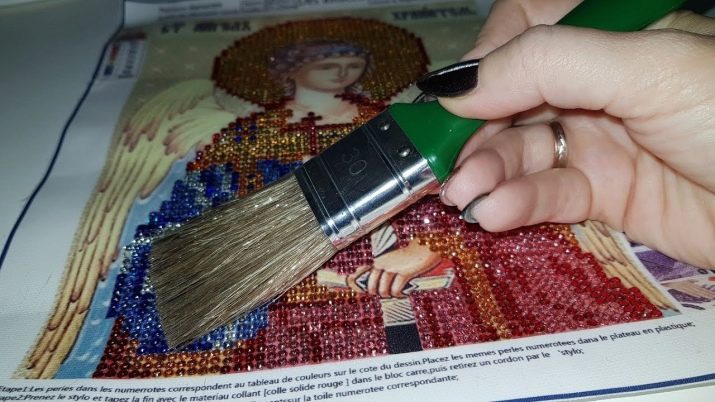All about rhinestones for diamond embroidery
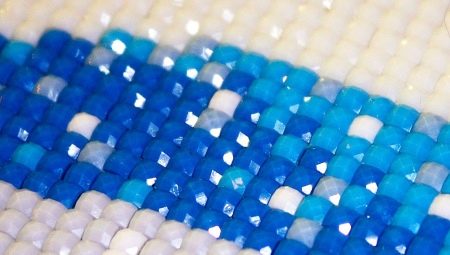
Good quality rhinestones make the diamond embroidery flawless. From the material in this article, you will learn what their types and features are, how to choose and use them correctly.
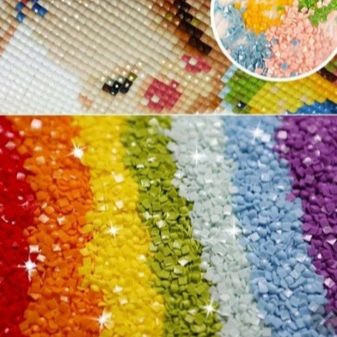
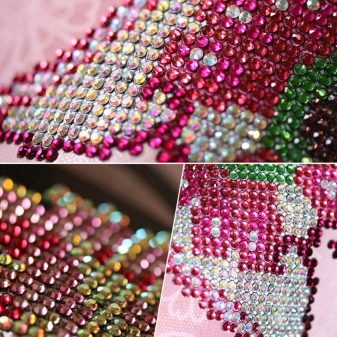
Varieties
Rhinestones for diamond mosaics can be classified according to different criteria. Their size can vary from 2 to 5 mm. Smaller types of beads are more difficult to work with, however, they make the image more realistic.
Rhinestones are round and square in shape. The first types of elements are often used in partial display. They perfectly emphasize the volume, convey a fantastic play of light.

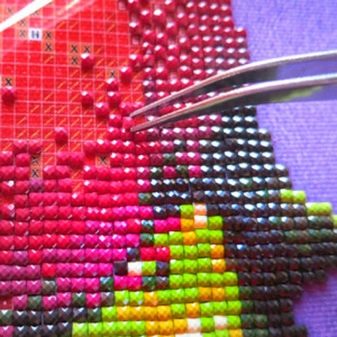
Square beads are more in demand. They completely fill the canvas and have a wider color gamut. By completely filling the canvas, they create the most realistic embroidery effect.
Rhinestones for diamond embroidery differ in the number of facets. Depending on their type, there can be 9 or 13. In addition, the elements are classic and non-adhesive.

Texture and materials
The materials for the production of rhinestones are acrylic and glass. Each type of raw material gives the stones its own effect. Most beads have a medium gloss and opacity.
In addition to glossy elements, there are acrylic varieties with a matte texture on sale. Some types are Swarovski crystals with characteristic transparency and brilliant shine.
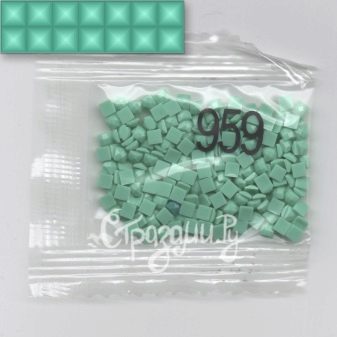
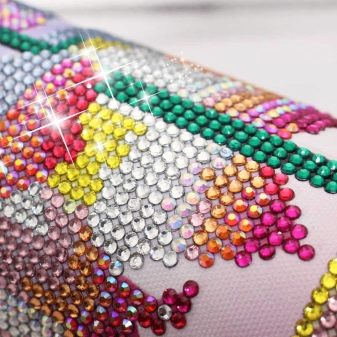
Cut beads with a translucent texture are distinguished by the reflection of light passing through the rhinestones themselves. Translucency is inherent in circular elements.
Today, there are sets with multi-shape elements on sale. The package includes elements of mixed type. Such pictures look unusual.
For example, the set may include rhinestones with varying degrees of brightness. In addition to the usual, densely colored beads, the manufacturer adds transparent stones.
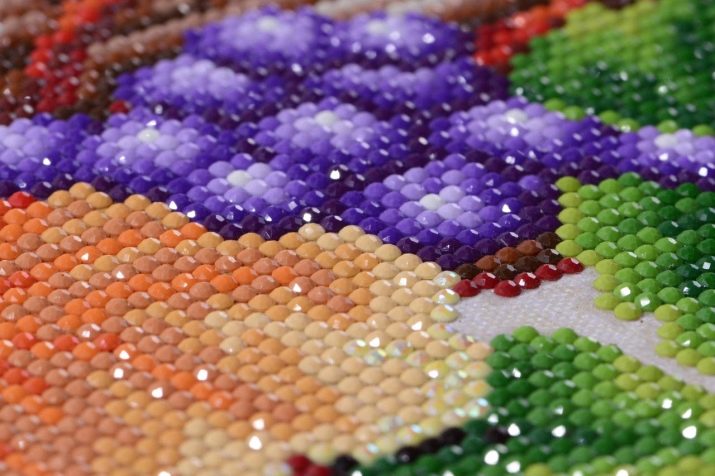
At the same time, the set contains rhinestones of different sizes and shapes (round, square, oval, pearl-like).
Which is better?
When choosing between round and square rhinestones, you need to focus on a number of factors.
- Round elements require more careful handling. They do not differ snugly to each other. Not suitable for laying out paintings from photographs. Despite the ease of assembly, they are not suitable for laying out portraits.
- Square rhinestones do not shine as much in the light as round ones. But they allow you to assemble paintings from photographs, despite the complexity of assembly and a small effect of light reflection.
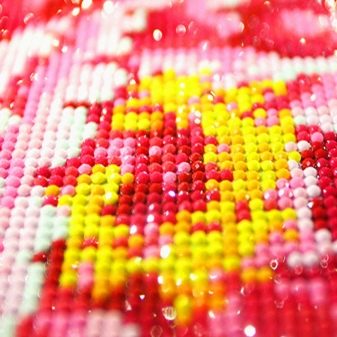
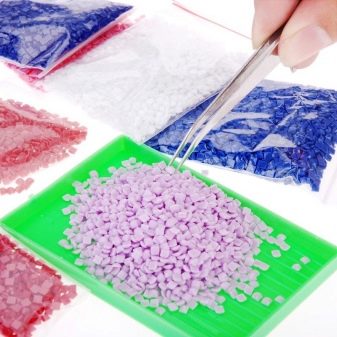
If we compare the number of elements, then when laying out squares it takes more. However, it is this factor that enhances the clarity of detail.
Selection Tips
When choosing rhinestones for needlework, there are several factors to consider. One of them is the age of the person who is engaged in laying out rhinestones. For example, non-glue beads are glued with special glue.
Often the buyer chooses rhinestones in a ready-made set. For children, they try to buy sets with medium-sized beads. Usually these are sets with simple pictures and a slight run in the color palette.
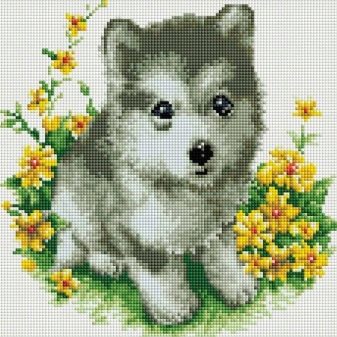

Adults buy diamond embroidery kits with standard rhinestones. Depending on the complexity and realism of the image, the palette can have many shades and halftones.
Large elements are good for the development of fine motor skills in children. Such work teaches perseverance, while due to the size of the rhinestones, the drawing is assembled as quickly as possible.
In addition, large beads are purchased for the elderly. They are convenient to work with, while it is preferable to buy elements of a round shape due to the less laboriousness of their calculation.
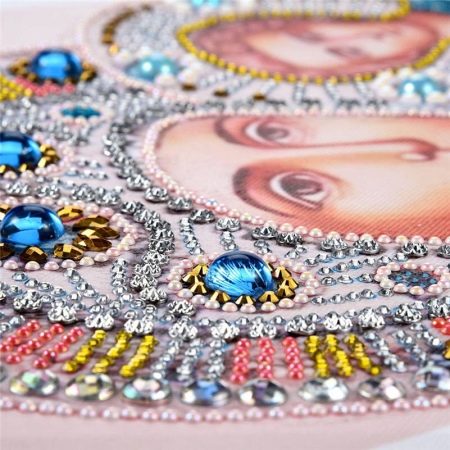
As for practicality, it is easier to care for a canvas with lined square rhinestones. Due to the absence of voids, dust does not clog in them.
For a portrait, it is better to choose matte beads. In layouts, they will create a realistic effect. Shiny and translucent are more suitable for decorating canvas. They will not give the desired effect.
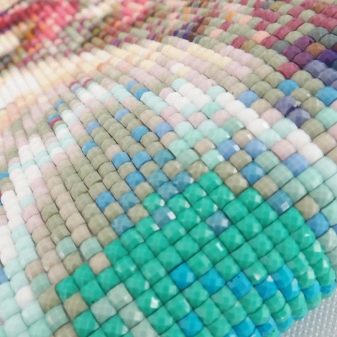
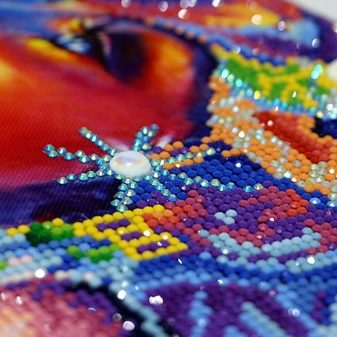
Nuances of use
Rhinestones are attached to the panel on a special adhesive base. To simplify the work, the manufacturer indicates the fixing points directly on the canvas. To make the stones easier to glue onto the base, you need to follow the simple rules of diamond mosaic. To do this, use a special pencil (stylus) and a tray.
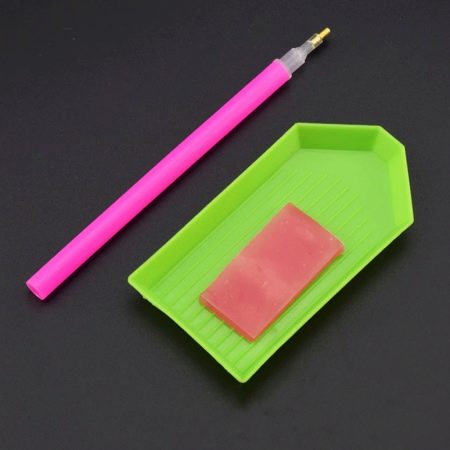
The glue-tipped pencil eliminates the need to pinch a pebble with tweezers. The tray is needed so that the beads do not turn upside down. In addition, it is much more convenient to take them from the container than from the bag.
Experienced craftsmen advise not to neglect the ruler. It allows you to align a row of rhinestones when it is not possible to install them on the base with perfect precision.
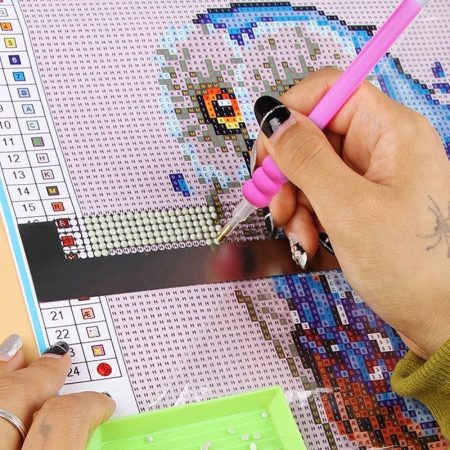
In the work, it is necessary to take into account the properties of the glue. In kits for diamond embroidery, it is applied to the front side of the canvas and covered with a protective layer. As soon as the layer is removed, the glue begins to dry out. In view of this, remove the protective film in small fragments. Usually it is cut with a clerical knife.
At the end of the laying out, the rhinestones on the canvas are covered with acrylic varnish. Due to this, the strength of the hitch is improved, and the picture takes on a finished look.
